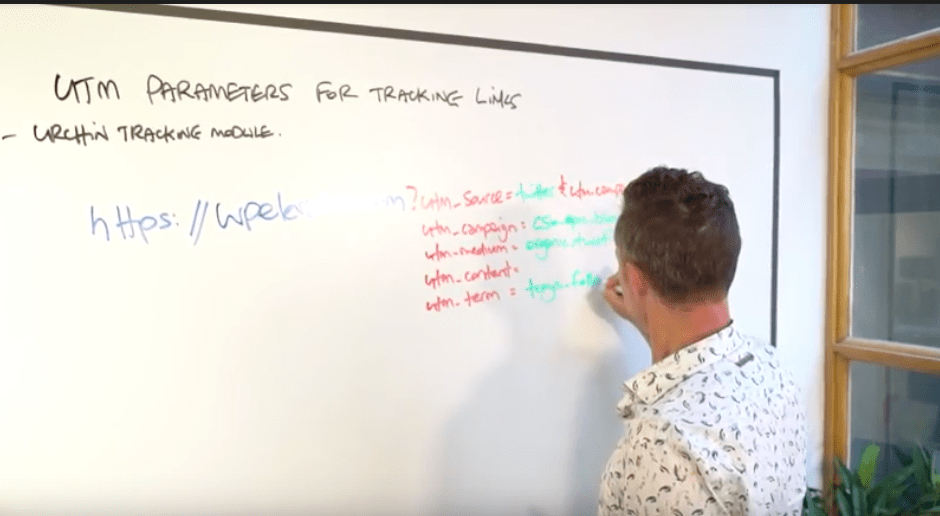As many of you know, after I filmed the Content Strategy Blueprint with Dana Malstaff, I had to rethink our whole content strategy. And one of the things I want to do is be totally transparent with you and show you how we run our business.
After all, you need to know that you're learning from people that are actually walking the walk right?
So, in order to be a bit more transparent with you, we've created a new series of whiteboard lessons. If you missed last week's episode then check it out here.
In this lesson, I'm going to give you an overview of UTM parameters and how you can use them to track where the traffic to your website is coming from and why they've arrived.
UTM stands for Urchin Tracking Module.
Urchin was a web analytics software company before Google came along and they invented the UTM parameters. You use them to understand who your web visitors are and where your conversions are coming from so you can put more effort into those marketing channels.
So here is an example of a UTM link that we used for last week's blog about content marketing:

Now let's break that down:
Source:
The Source Parameter is where they're coming from. So in this case, the source is twitter because I've posted this link to Twitter.
Campaign:
The Campaign parameter is the thing that we're promoting. So at the moment, we're promoting the Content Strategy Blueprint blog post. So, in that case, I'll set the campaign as csb_epic_blog.
Medium:
The Medium parameter is the thing that they've clicked on to get here. For example, a video, an email or a social post. You just want to give as much detail about the thing that they've actually clicked on so here I would say the Medium is organic_tweet.
Content:
The Content parameter is how we're going to differentiate this Tweet from another Tweet. So in this example, we are sending people to our Content Strategy Blueprint Epic blog, but I might Tweet three or four different times about different subjects within that post.
So for this Tweet, I'm talking about building your authority with content. So I will set the Content parameter as authority
Term:
If you're using the link within a paid ad then the Term parameter is used to describe the keyword that you're bidding on.
If this isn't a paid ad link, then Term will be the audience that you're promoting it to.
So it's either the keyword that you're going after or the audience that you're promoting it to.
In this case, it's not a paid ad and so I'm going to name the Term troys_followers.
Overview
So now we've set the parameters as:
Source: Twitter
Campaign: csb_epic_blog
Medium: organic_tweet
Content: authority
Term: troys_followers
Which means I've used Twitter to send people to my Content Strategy Blueprint Epic blog post. I've done it using an organic Tweet. I've differentiated this Tweet from other Tweets by mentioning the particular topic of the post – Authority and I've sent that out to Troy's followers.
So that's it!
To create your UTM parameters use a builder such as UTM Tag Builder. And then all of the information you need about traffic to your website will be reflected in your Google Analytics, which you can then plug into any of your other marketing dashboards.



